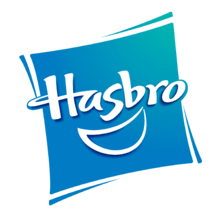Operation (game)
| Players | 1 or more |
|---|---|
| Playing time | 10 min |
| Random chance | Low |
| Skill(s) required | Dexterity |
Operation is a battery-operated game of physical skill that tests players' hand-eye coordination and fine motor skills. The game's prototype was invented in 1964 by John Spinello, a University of Illinois industrial design student at the time, who sold his rights to the game to Milton Bradley for a sum of USD $500 and the promise of a job upon graduation.[1] Initially produced by Milton Bradley in 1965, Operation is currently made by Hasbro, with an estimated franchise worth of USD $40 million.[2][3]
The game is a variant on the old-fashioned electrified wire loop game popular at funfairs around the United States. It consists of an "operating table", lithographed with a comic likeness of a patient (nicknamed "Cavity Sam") with a large red lightbulb for his nose. This could be a reference to classic cartoons, where ill characters' noses turn red. In the surface are a number of openings, which reveal cavities filled with fictional and humorously named ailments made of plastic. The general gameplay requires players to remove these plastic ailments with a pair of tweezers without touching the edge of the cavity opening.
Gameplay
Operation includes two sets of cards: The Specialist cards are dealt out evenly amongst the players at the beginning of the game.
In the U.S and Australian version, players take turns picking Doctor cards, which offer a cash payment for removing each particular ailment, using a pair of tweezers connected with wire to the board. Successfully removing the ailment is rewarded according to the dollar amount shown on the card. However, if the tweezers touch the metal edge of the opening during the attempt (thereby closing a circuit), a buzzer sounds, Sam's nose lights up red, and the player loses the turn. The player holding the Specialist card for that piece then has a try, getting double the fee if he or she succeeds.
Since there will be times when the player drawing a certain Doctor card also holds the matching Specialist card, that player can purposely botch the first attempt in order to attempt a second try for double value.
The game can be difficult, due to the shapes of the plastic ailments and the fact the openings are barely larger than the pieces themselves.
- Adam's Apple: an apple in the throat ($100). "Adam's apple" is a colloquial term referring to the thyroid cartilage surrounding the larynx that becomes more visually prominent during puberty.
- Broken Heart: a heart shape with a crack through it on the right side of the chest ($100). The phrase "broken heart" refers to an emotional feeling in which someone is very sad for a reason such as a breakup with a romantic partner.
- Wrenched Ankle: a wrench in the right ankle ($100). "Wrenched ankle" is an alternative term for a sprained ankle.
- Butterflies in Stomach: a large butterfly in the middle of the torso ($100). The name comes from the feeling in the stomach when nervous, excited or afraid.
- Spare Ribs: two ribs fused together as one piece ($150). "Spare Ribs" are a cut of meat or a dish prepared from that cut.
- Water on the Knee: a pail of water in the knee ($150). Colloquialism for fluid accumulation around the knee joint.
- Funny Bone: a cartoon-style bone ($200). A reference to the colloquial name of the ulnar nerve which is itself thought to be a play on the anatomical name for the upper arm bone (the humerus).
- Charley Horse: a small horse resting near the hip joint ($200). A "charley horse" is a sudden spasm in the leg or foot that can be cured by massage or stretching.
- Writer's Cramp: a pencil in the forearm ($200). A "writer's cramp", which is a soreness in the wrist that can be cured by resting it.
- The Ankle Bone Connected to the Knee Bone: A rubber band that must be stretched between two pegs at the left ankle and knee. This is the only non-plastic piece in the game and the only card that requires the player to insert rather than remove something ($200). The name is taken from the African American spiritual "Dem Bones".
- Wish Bone: a wishbone similar to that of a chicken located on the left side of the chest ($300). A "wish bone" is a colloquial name for the Furcula which is a bone found in birds and some other animals. Traditionally, the Furcula of a chicken may be used by two people for making competing wishes.
- Bread Basket: a slice of bread, with a small notch taken out of the top for grip ($1,000). The word "breadbasket" is slang for the stomach.
- Brain Freeze: an ice-cream cone located in the brain ($600). Refers to the experience of "brain freeze", a headache felt after eating frozen desserts and iced drinks too quickly.
"Brain Freeze" was added in 2004, when Milton Bradley allowed fans a chance to vote on a new piece to be added to the original game during the previous year. Voters were given three choices and could make their selection via the company's official website[4] or by phone for a chance to win a $5,000 shopping spree.[5] The winning piece beat out tennis elbow and growling stomach.
References
- ↑ "John Spinello, Inventor Of 'Operation' Game, Can't Afford Real-Life Operation". Huffington Post. 27 Oct 2014. Retrieved 29 Oct 2014.
- ↑ "OPERATION Game History". Hasbro.com. Retrieved 2010-10-13.
- ↑ "'Operation' Inventor, 77, Can't Afford Real Life Operation". TIME. 28 Oct 2014. Retrieved 29 Oct 2014.
- ↑ http://www.operation.com
- ↑ "Brain Freeze, Tennis Elbow or Growling Stomach?". Boardgames.about.com. Retrieved 2010-10-13.
